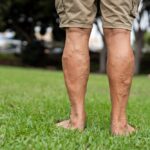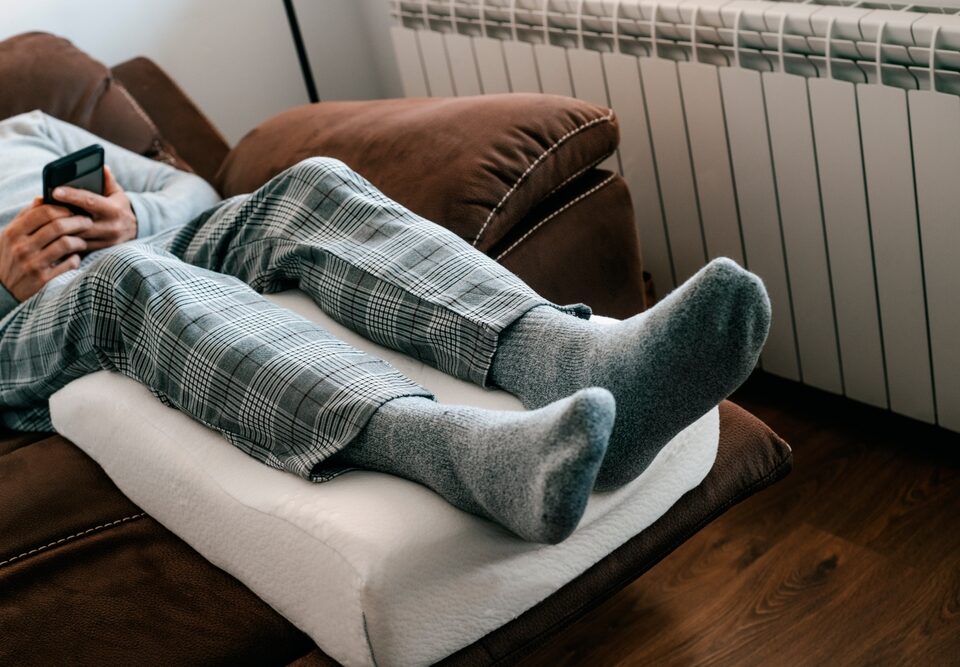
What is the Cost of Varicose Vein Treatment Near Baltimore?
October 29, 2025
6 Common Causes of Vein Conditions in Men
October 29, 2025If you’ve undergone treatment for varicose or spider veins, you’ve likely experienced the relief that comes with clearer, healthier-looking legs. But a common question many patients ask after treatment is: “Will my leg veins reappear after having them removed?”
The short answer is: the treated veins will not return, but new ones can develop over time — especially if the underlying causes of vein disease aren’t addressed. Understanding why veins form in the first place and how to maintain long-term results can help you keep your legs healthy for years to come.
Here’s what you should know about what happens after vein treatment and how to reduce your risk of new vein problems.
What Happens When Veins Are Removed or Closed
When varicose or spider veins are treated using modern, minimally invasive techniques, the damaged veins are either sealed shut or physically removed. The body then naturally reroutes blood flow through nearby healthy veins.
This process permanently eliminates the treated veins. They cannot reopen or “grow back.” However, the same factors that caused those veins to appear — such as genetics, hormonal changes, or poor circulation — can lead to new varicose or spider veins forming in different areas of the leg.
That’s why vein treatment isn’t just about removing visible veins. It’s also about correcting the underlying issue, which is often a condition called chronic venous insufficiency (CVI) — when the valves in your veins weaken and allow blood to pool in the legs.
Why Leg Veins Reappear Over Time
Even after successful treatment, certain risk factors can contribute to new vein development. These
include:
- Genetics: If varicose veins run in your family, you’re more likely to develop new ones.
- Hormonal changes: Pregnancy, menopause, or hormone therapy can increase vein pressure.
- Lifestyle factors: Prolonged standing or sitting, lack of movement, and weight gain can strain your leg veins.
- Aging: As we age, vein walls and valves naturally weaken, making new veins more likely to appear.
- Inadequate compression or follow-up: Skipping compression therapy or aftercare instructions can impact results.
The good news is that modern vein treatments are designed to address both the cosmetic and medical aspects of venous disease, reducing the risk of recurrence and helping you maintain lasting results.
Long-Term Solutions for Healthy Veins
If you’ve had your veins treated, there are several steps you can take to maintain smooth, pain-free legs and prevent new veins from developing:
- Wear compression stockings as recommended by your vein specialist to support circulation.
- Stay active — walking, swimming, and yoga help promote blood flow.
- Elevate your legs when resting to reduce swelling and pressure.
- Maintain a healthy weight to minimize strain on your veins.
- Avoid sitting or standing for long periods; take breaks to move every hour.
- Schedule regular checkups with your vein specialist to monitor vein health.
By combining healthy habits with expert follow-up care, you can enjoy long-lasting results and keep your legs feeling strong and energized.
If Your Leg Veins Reappear, Our Expert Vein Specialists Are Here to Help!
While treated veins will not return, it’s possible for new ones to appear over time — especially if you’re genetically predisposed. The best way to prevent recurrence is through ongoing vein health management and routine follow-up care with a trusted vein specialist.
At The Vein Center of Maryland, serving patients throughout the Baltimore – Columbia area, we take a comprehensive approach that focuses on long-term relief, comfort, and confidence.
If you’ve noticed new veins forming or are curious about your treatment options, Contact us online or call The Vein Center of Maryland today at 410-970-2314. Our expert staff will assess your veins, explain personalized treatment options, and help you enjoy healthy, beautiful legs — for life.



